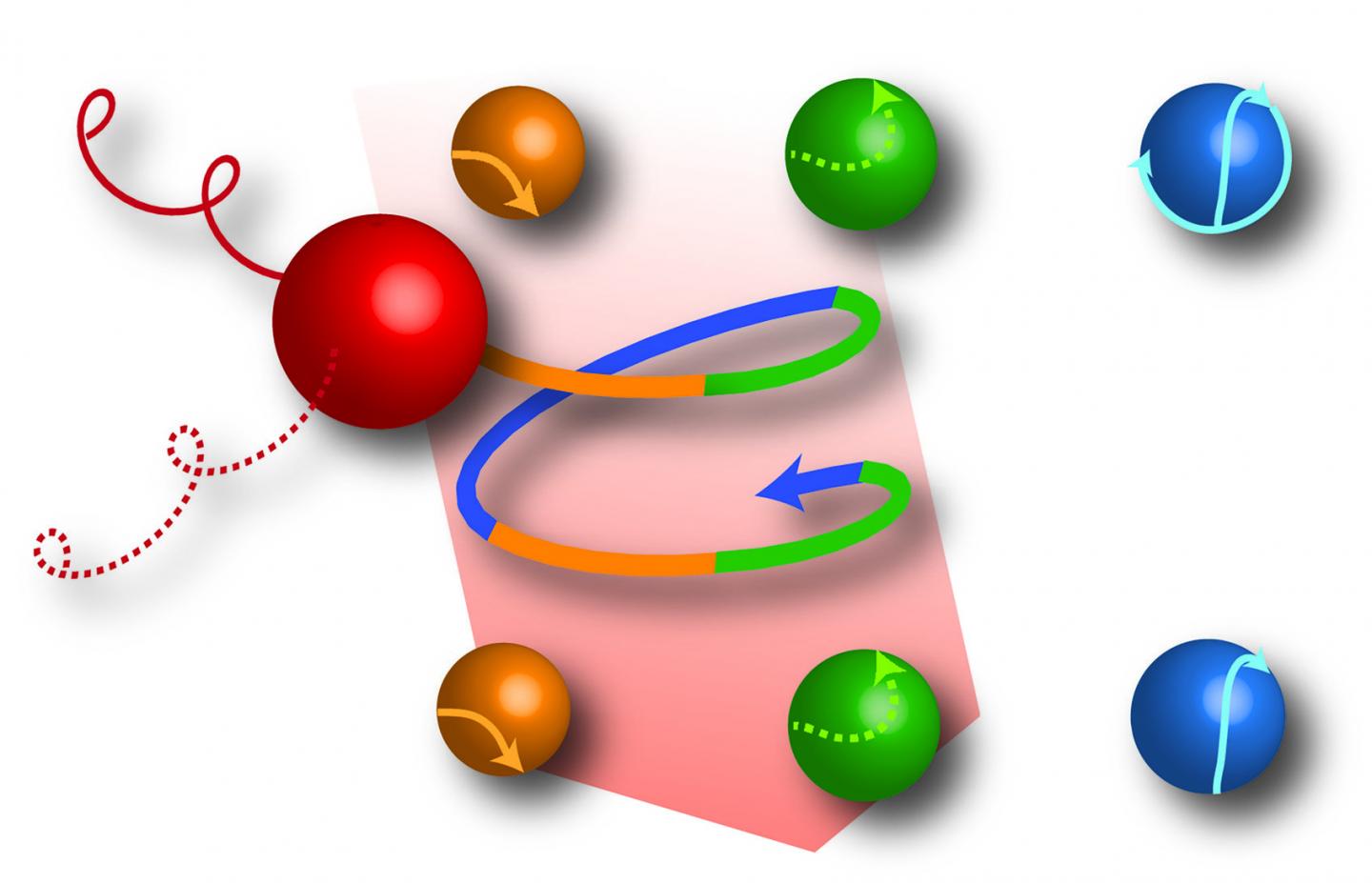Research team analyses flagellar locomotion

Credit: Max Planck Institute of Colloids and Interfaces/Klaas Bente
A scientific team from the Biosciences and Biotechnology Institute of Aix-Marseille in Saint-Paul lez Durance, in collaboration with researchers from the Max Planck Institute of Colloids and Interfaces in Potsdam and the University of Göttingen, determined the trajectory and swimming speed of the magnetotactic bacterium Magnetococcus marinus, known to move rapidly. The actual speed is 400-500 μm/s for a 1 μm bacterium, making it a swimming champion. More surprisingly, the trajectory is made up of complex spirals. The exceptional properties of this bacterium make possible to imagine its use as a micro-robot in the fields of biotechnology and the environment.
The magnetotactic bacterium Magnetococcus marinus lives in marine sediments. Its apparent swimming speed, which is very fast, was previously estimated at 100 μm/s. Spherical in shape, it has two packs of flagella on one of its hemispheres. The exact movement, supposedly helical in the presence of a magnetic field, with the head in front and the flagella at the back, however, remained hypothetical.
To answer this question and determine the real swimming speed of this bacterium, scientists from the Max Planck Institute of Colloids and Interfaces in Potsdam, the University of Göttingen and their colleagues from BIAM at CEA-Cadarache had to develop new experimental and numerical tools. The movement of these micro-swimmers was tracked by 3-dimensional microscopy and analysed by very high frequency black field imaging to decompose the movement of the flagella. This experimental work was complemented by original simulations to see which flagellum configurations could reproduce the movement observed experimentally.
The conclusion is astonishing. The flagella are arranged at 180° on either side of the head of the bacterium, with one bundle pulling and another growing, a configuration never observed before for bacteria or even for any known microorganism. The resulting movement describes double or even triple spirals! Magnetococcus marinus makes complex loops of sorts.
What about speed? The real speed is not the apparent speed, as the spirals considerably increase the travelled distance. The real speed is in the range of 400 to 500 μm/s for a bacteria measuring 1 μm. So it moves 500 times its own size, every second. This figure should be compared to the speed of movement of other known bacteria (40 to 50 μm/s), or to the swimming speed of our champions, of the order of 2 m/s, i.e. about one time its size per second for humans…
So Magnetococcus marinus is the queen of the podiums! Researchers are wondering about the origin of these performances and propose the hypothesis that this type of spiral swimming has an advantage in a sedimentary environment full of obstacles, which loops would allow to avoid. This particularity could be exploited in medical micro-robotics, to move in the blood of patients. It could also be used to sanitize areas polluted with oil or heavy metals, for example, which the bacteria could suck up and release in suitable spaces.
###
Original Publication
K. Bente, S. Mohammadinejad, et al.
High-speed motility originates from cooperatively pushing and pulling flagella bundles in bilophotrichous bacteria
eLife (2020)
https:/
Media Contact
Katja Schulze
[email protected]
49-331-567-9203
Original Source
https:/
Related Journal Article
http://dx.





